Create a professional CV now!
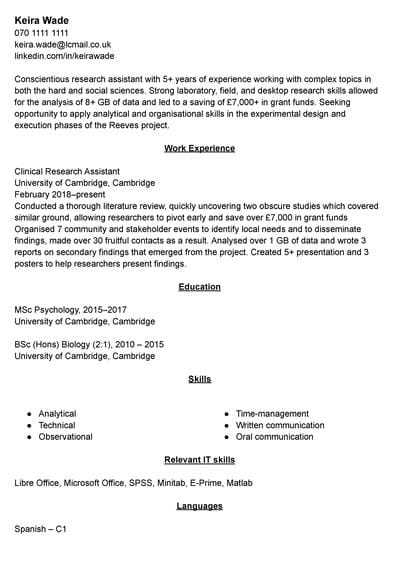 NO
NO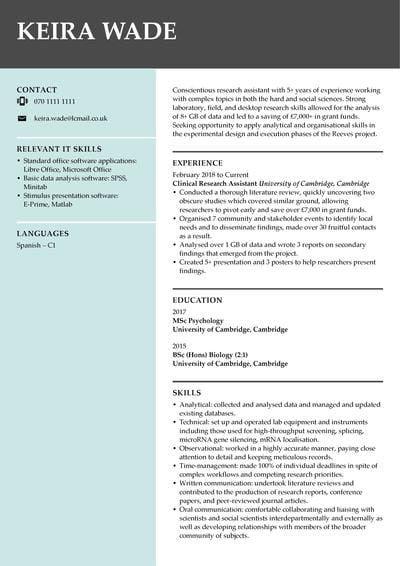 YES
YESOur customers were hired by:
You’ve sat down to write or rewrite your CV. Obviously, you’re aiming to end up with as effective a CV as possible. A CV introduction is absolutely critical to achieving that goal, and the best CV introduction is the one that gets the rest of your CV read by recruiters. That’s all well and good, but where do you even start?
This article will show you plenty of CV introduction examples and walk you through the process of writing a CV introduction that’s perfectly suited to your experience level and even CV length. The CV example below is better than the vast majority of those out there – yours can at least start off as well.
Create an effective CV in minutes. Choose a professional CV template and fill in every section of your CV in a flash using ready-made content and expert tips.
Create a professional CV now!
 NO
NO YES
YESWe created the sample on the right using our builder. See other good CV examples like this one.
Striving to upgrade your CV and make it more professional? See these guides:
After analysing 6 million CVs created with our builder, we found out that*:
*The data comes from a period of the last 12 months (August 2023-August 2024).
Keira Wade
070 1111 1111
keira.wade@lcmail.co.uk
linkedin.com/in/keirawade
Conscientious research assistant with 5+ years of experience working with complex topics in both the hard and social sciences. Strong laboratory, field, and desktop research skills allowed for the analysis of 8+ GB of data and led to a saving of £7,000+ in grant funds. Seeking opportunity to apply analytical and organisational skills in the experimental design and execution phases of the Reeves project.
Work Experience
Clinical Research Assistant
University of Cambridge, Cambridge
February 2018–present
Education
MSc Psychology, 2015–2017
University of Cambridge, Cambridge
BSc (Hons) Biology (2:1), 2010 – 2015
University of Cambridge, Cambridge
Skills
Relevant IT skills
Languages
Spanish – C1
Now that’s the right way to start a CV! Let’s learn how to write your own CV introductory paragraph:
Recruiters and hiring managers often see hundreds of CVs for each job. They don’t have the time or the energy to sift through your work history and skills to figure out what kind of worker you are. No one would. So you need to give them a helping hand; introduce yourself and whet their appetite.
A well-written CV introduction will give your reader a quick summary of who you are, give them a taste of what you have to offer, and get them interested enough to read the rest of your CV. This is similar to what a good cover letter does, but we’re not here to write a CV introduction letter, just a CV introduction paragraph. That's what you include in your CV first.
A strong CV summary will convince the recruiter you’re the perfect candidate. Save time and choose a ready-made personal statement written by career experts and adjust it to your needs in the LiveCareer CV builder.
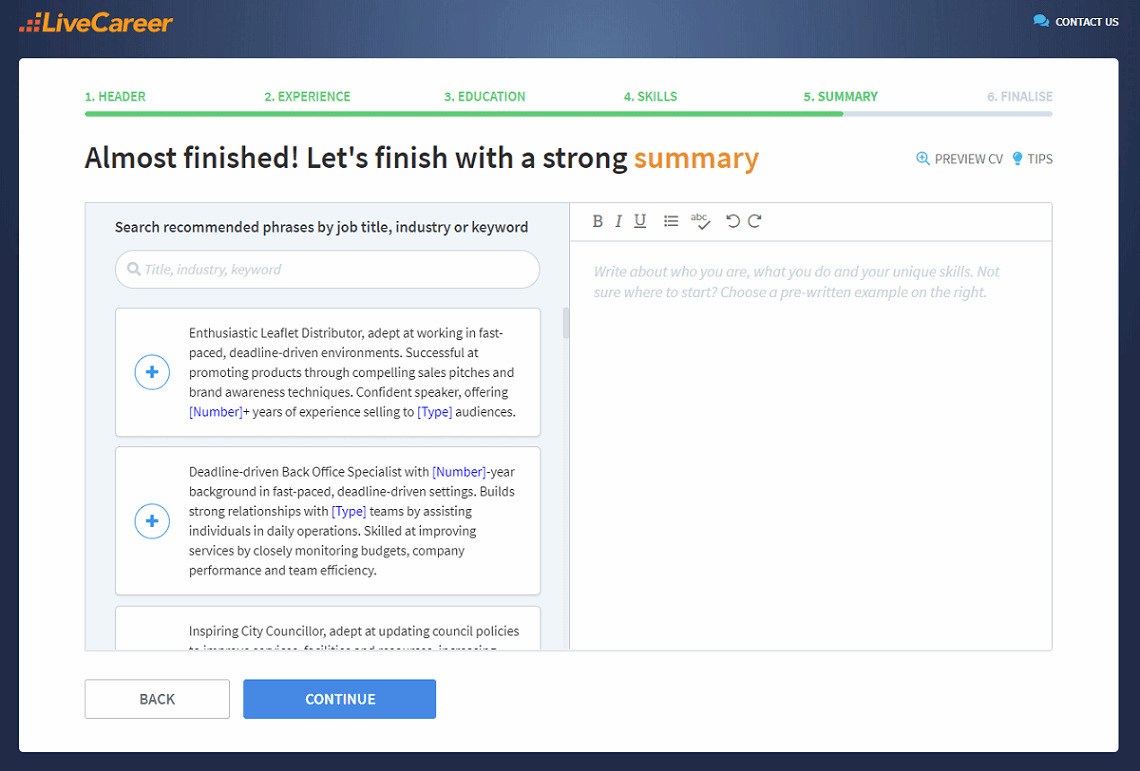
There are two main categories of use cases for a CV introduction: a CV objective and a CV summary. A CV objective is great if you’re just starting out on a career path—whether that means you’re writing your first CV or a career change CV. It doesn’t assume any experience and focuses on your potential.
A CV summary (also called a CV profile) is what you want if you’re already on a career path. It draws upon your work history to show recruiters what it is that you could bring to their company. There are three possible types of CV summary: a paragraph version, a bullet-point version, and an ultra-compact headline version.
Writing a CV objective can be a daunting task as you don’t have any relevant experience yet (because you’re either just starting out or changing careers). Luckily, there’s a simple, three-sentence structure you can use that never fails. Start by introducing yourself: your occupation, experience or year-level, and specialisation.
Describe in a single sentence an achievement that’s relevant to the job you’re applying for. Start with a verb like ‘wrote’, ‘negotiated’ or ‘organised’ and focus on any benefits that arose as a result of your actions, and which an employer would be interested in. Put numbers to everything you can, estimating if need be.
Finally, answer in a single sentence the question ‘what do you hope to achieve in this role?’ or, ideally, ‘what do you hope to achieve for your new employer’. This might be more difficult if you’re writing, for example, a student CV, but if you’re a career changer then you can really bring your transferable skills to the fore.
Highly motivated, final year biological sciences student with a passion for experimental design. Recently completed a summer semester programme centred on advanced statistical analysis methods with an average grade of 92% across all assessment. Looking to continue developing research and analysis skills while helping the neurosciences department achieve its publication goals.
A CV summary is for you if you’re already on your chosen career path and have some experience under your belt. You can generate a CV summary quickly and painlessly by following a similar three-sentence structure to a CV objective.
First, introduce yourself by mentioning your current job title, years of experience, and one or two of your attributes. You can also mention particular contexts or specialisations in which you’ve been working. Next, detail one of your on-the-job achievements, describing both the action you took and the benefits your employer gained.
Finally, close out your CV summary by answering the question of what it is that you hope to be able to achieve in this role for your new employer. This automatically shows that your professional goals line up nicely with the employer’s business goals.
Conscientious research assistant with 5+ years of experience working with complex topics in both the hard and social sciences. Strong laboratory, field, and desktop research skills allowed for the analysis of 8+ GB of data and led to a saving of £7,000+ in grant funds. Seeking opportunity to apply analytical and organisational skills in the experimental design and execution phases of the Reeves project.
A summary of qualifications is very similar to a CV summary, but it’s in point-form rather than being a CV introduction paragraph and it’s focused more strictly on your attributes, skills, and experience than it is on your goals. To write it, simply populate 4–5 bullet points with highlights from your CV.
The fourth kind of CV introduction differs significantly from the first three by simply doing a lot less. A CV headline will generally only cover 1/4–1/3 of what the others can cover. This is the trade off for having a CV introduction that takes up just one line—a huge advantage if you’re low on space.
To write a CV headline, combine your professional identity with one or two of the following: a pared-down achievement, an attribute (adjective) or two, your experience expressed in years. Put your CV headline under your contact details in your CV. Use a CV summary if you have the space, though.
The best advice for getting the best CV introduction possible with the least effort is to leave writing it until last. You’ll have a much, much clearer view of your CV after you’ve at least finished your work experience and skills sections. Picking out professional achievements and skills is a breeze once you have those done.
Many job applications these days are passed through Applicant Tracking Systems (ATSs) before recruiters ever get to see them. Give your CV a fighting chance by mentioning the company to which you’re applying by name, mentioning the position by name, and mirroring keywords from the job advert.
The trick to creating impressive achievements is quantifying everything you can, especially the benefits that your employer gleaned as a result of your actions. This makes your achievements concrete and convincing. You can use accomplishment statements to help you structure your achievements.
Presentation is important. Proofread your CV introduction at least a couple of times and get someone else to look over it (and your whole CV, of course). Mind the right CV format. Use an understated CV font like Noto, Garamond, Liberation, Arial or Calibri and leave the font size at 11–12 points. Choose a clean, well-designed CV template, as visuals are important, too. View our list of best CV templates (including free CV templates) to find your best match. Always save in PDF to protect formatting.
You don’t have to be a CV writing expert. In the LiveCareer CV builder you’ll find ready-made content for every industry and position, which you can then add with a single click.
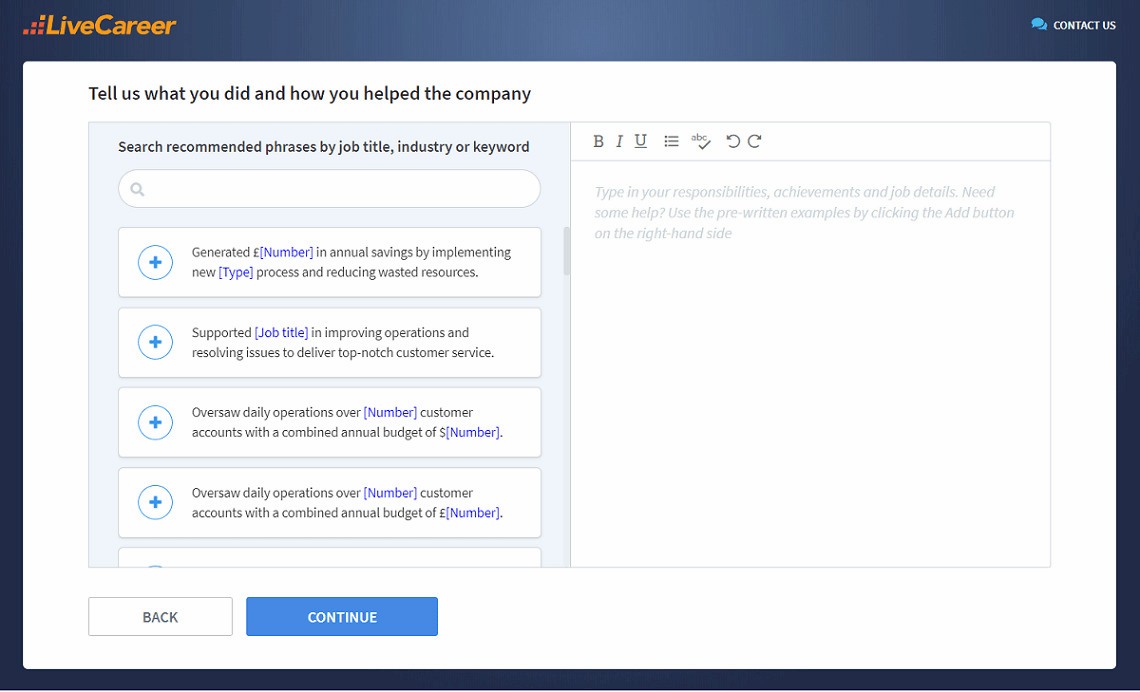
I hope this article has helped you straighten out the different kinds of CV introductions you have to choose between. Feel free to leave any question, comments, feedback or experiences down in the comments section below.
Our editorial team has reviewed this article for compliance with Livecareer’s editorial guidelines. It’s to ensure that our expert advice and recommendations are consistent across all our career guides and align with current CV and cover letter writing standards and trends. We’re trusted by over 10 million job seekers, supporting them on their way to finding their dream job. Each article is preceded by research and scrutiny to ensure our content responds to current market trends and demand.
About the author
Since 2013, the LiveCareer UK team has shared the best advice to help you advance your career. Experts from our UK editorial team have written more than one hundred guides on how to write the perfect CV or cover letter.
Rate this article:
Cv introduction
Average:
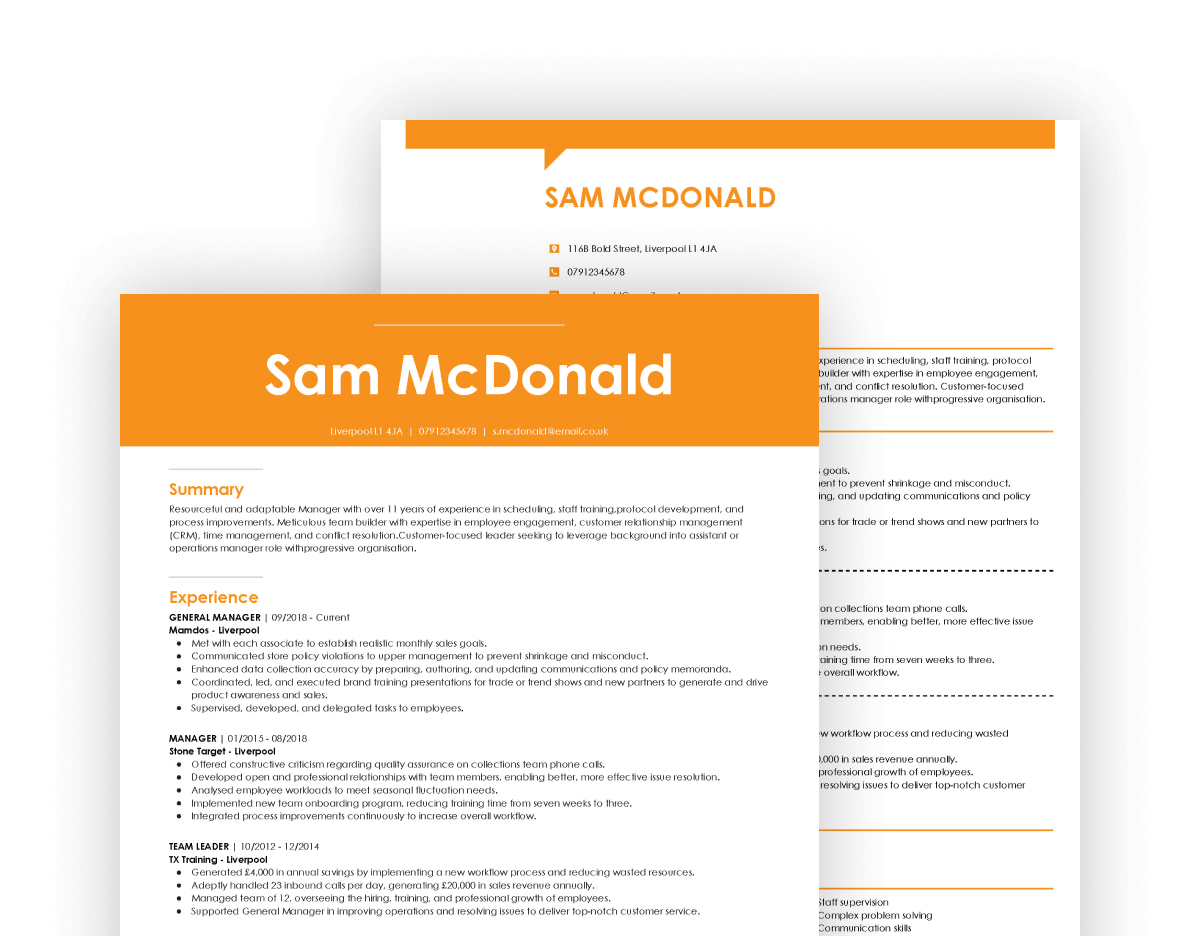

See the list of the best customer service skills examples and learn how to improve them. Check how to put customer service skills on your CV.

See how to write your education on a CV the right way. Make sure your education section makes the grade with our expert examples and tested tips.
![How to List Your Degree on a CV [6+ Examples]](https://cdn-images.livecareer.co.uk/pages/how_to_write_your_degree_on_a_cv_lcuk_1.jpg?fit=crop&h=216&dpr=3)
Learn how to write your degree on a UK CV to ensure it reflects the time and effort you invested, giving it the recognition it truly deserves.
Our customers were hired by: